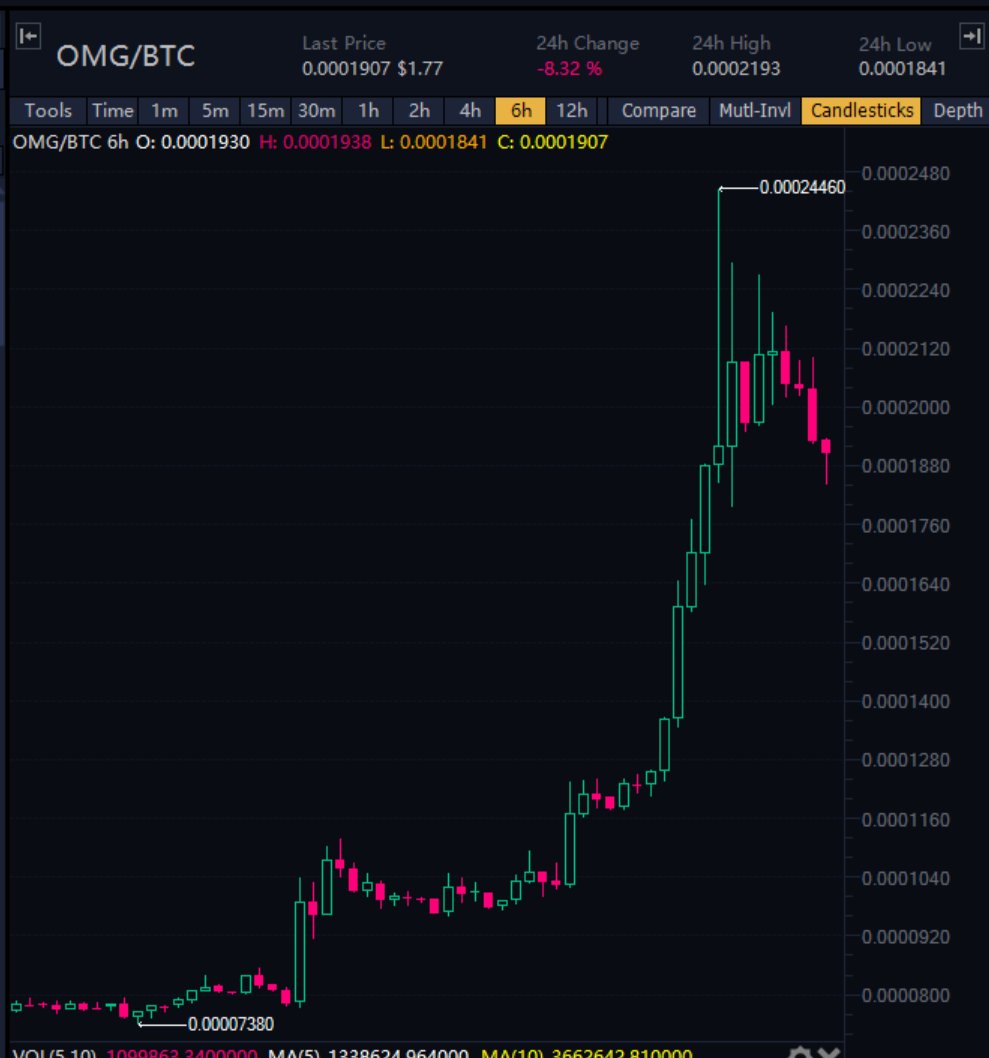OMG went on a tear ever since Coinbase announced it’d be listing (and especially after the listing itself) -- I don’t have much opinion about its price moving forward, but this does call to mind one of my favorite old trades that’s (mostly) gone by the wayside.
Back during late 2017 and early 2018 (during “alt season”), exchanges were listing coins left and right, and new projects were salivating at the chance to get listed on major exchanges. Without fail, getting listed on a hot exchange came with huge (often lasting) price impact.
And, to be clear, I think these price increases were pretty organic -- it makes a lot of sense that getting listed on a major exchange should come with an increase in access for people who might be interested in buying (and an increase in people knowing you even exist).
This was true for all the exchanges with significant volume -- back then, think Bittrex/Upbit, Bithumb, OKEx, Huobi, and then-up-and-comer Binance (as well as many others).
How to capitalize, though? It turns out the rallies happened *fast* -- in almost every case, using naive means of knowing about the listings was way too slow to make any trades, and buying by the times e.g. the exchange tweeted about it was very negative EV.
So, how do you know sooner? It turns out that, for a lot of exchanges, the answer was the exchange’s blog. The first time the market could find out about a Binance listing, for example, was the post they made on their blog announcing the listing.
And the exchanges did a shockingly good job at keeping these things under wraps (even from the coin projects themselves!). Virtually every time, there was no sign of any pre-impacting -- the blog post was truly the first time anyone in the market knew.
So if you learned the format of the listing announcement posts and really frequently scraped the exchange blogs for it, you could be (essentially) the first person in the world to learn the *public* information that a coin was listing on a major exchange!
And that meant that, if you had money on lots of other exchanges, you could set up algorithms to buy the coins immediately, before the rest of the world knew and started buying as well (though it was key to be careful with size and aggressiveness).
This was lots of fun -- I had alerts set up such that I’d get awoken no matter when this happened, and more than once I had to rush home to deal with some giant shitcoin position (my friends never did get used to my habit of abandoning them for this :P).
Around May 2018, the effect where new listings always caused coins to surge dissipated -- alt season was over, and exchanges stopped listing so many coins. Now it’s fairly rare for a new listing to come with such fanfare, and buying (even fast) doesn’t tend to be worth it.
Which loops back to the OMG rally -- why did that happen if this effect is basically over? How possible was it to predict in advance?
A few factors might have contributed -- the exchange doing the listing was Coinbase, and there’s a sense that a coin really needs to jump through a lot of hoops to get listed there -- during “alt season” they listed basically nothing.
So sentiment around a coin that does manage to get listed there might be abnormally positive, causing lots of net buying. Also, OMG in particular might have negative characteristics that a Coinbase listing helps dissipate.
Going forward, when evaluating whether to buy coins when a new listing’s been announced, that’s the sort of thing I’m going to look out for -- does this *specific* exchange listing this *specific* coin carry weight? Answering yes is, I think, critical for the trade to be good.

 Read on Twitter
Read on Twitter


